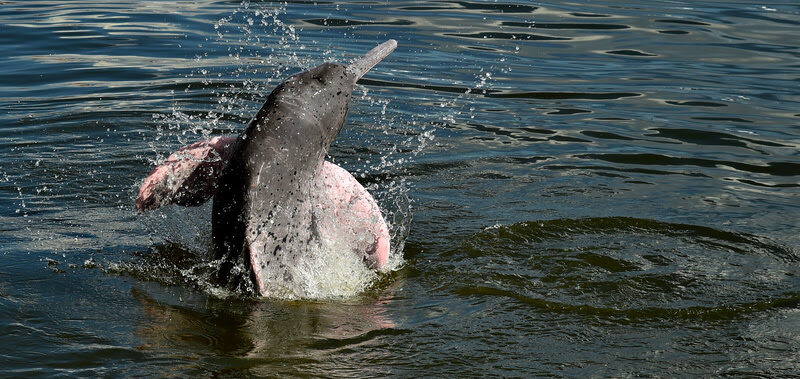🦍 Planet lost 69% of its fauna in less than 50 years, says study
Between 1970 and 2018, the planet lost 69% in the relative abundance of monitored wildlife populations worldwide.
ADVERTISING
In 2014, this rate was 50%. According to the 14th Living Planet Report (14th Living Planet Report), carried out biannually by WWF, in partnership with Zoological Society of London, this is a double emergency that puts the future of humans at risk: the loss of biodiversity and climate change.
Change in land use is the biggest current threat to nature, according to the study, released this Wednesday (12). This occurs with the destruction and fragmentation of the natural habitats of plant and animal species on land, in freshwater and at sea.
The new edition of the survey reveals that the Latin America had the biggest regional decline (94%), while populations of freshwater species recorded the largest global decline (83%).
ADVERTISING
In Brazil, among the animals with the greatest population declines are the Amazon dolphin. Also on the list are jaguars, the haystack cat, corals, the Bahian windcatcher lizard, and the nine-banded armadillo.
The report indicates that the main drivers of the decline of vertebrate populations worldwide are habitat degradation and loss, exploitation, introduction of invasive species, pollution, climate change and disease. Several of these factors played a role in the average 66% decline in Africa's populations, as well as the 55% decline in populations in Asia and the Pacific region.
The data is the result of using mapping analysis techniques to build a comprehensive picture of the speed and scale of changes in biodiversity and the climate and its consequences. The Living Planet Index thus acts as an early warning indicator, tracking trends in the abundance of mammals, fish, reptiles, birds and amphibians around the world.
ADVERTISING
“If we are unable to control warming so that it does not exceed 1,5°C, climate change will likely become the main cause of biodiversity loss in the coming decades”, points out the document.
Disproportionate effects
The WWF report points out that the impacts fall disproportionately on the poorest populations. And it also shows studies from Latin America – and specifically the Amazon – that support the causes of species decline, such as rising deforestation rates.
"We have already lost 17% of the original extent of the forest (Amazon), and another 17% have been degraded. The latest research indicates that we are rapidly approaching a tipping point, which is the time when our largest rainforest will lose its capabilities”, says the research.
ADVERTISING
The report's data reinforce statistics from the Intergovernmental Platform on Biodiversity and Ecosystem Services (IPBES), linked to the UN, which show that almost One million animal and plant species are threatened with extinction on the planet. Some of them are in a level of danger never before seen in human history.
Solutions and opportunity
In December, Canada will receive the 15th UN Biodiversity Conference. The expectation is that a new Global Framework will be constructed during the meeting. According to the WWF report, the signs are not good. “Discussions so far are stuck in old-world thinking and inflexible positions, with no sign of the bold action needed to achieve a positive future for nature,” the document states.
🍼 Microplastics are found in breast milk for the first time
Scientists have revealed that they have found microplastics in breast milk, according to a study published in the journal Polymers (🇬🇧) in June this year. The discovery occurred in 75% of samples taken from 34 healthy mothers, one week after giving birth to their babies, in Rome, Italy.
ADVERTISING
Second British newspaper report The Guardian (*), researchers advise pregnant women to avoid foods and drinks packaged in plastic, cosmetics and toothpastes containing microplastics.
👠 Arezzo wants to track the leather of your shoes
The Arezzo &Co group – one of the largest shoe manufacturers in Brazil – wants to reach the origin of its main raw material, leather, to ensure that it is not associated with deforestation.
According to a Reset portal information, the company – which in addition to the brand that bears its name owns Schutz, Anacapri, Alexandre Birman, Fiever, Alme and MyShoes, in addition to the distribution of Vans in Brazil – is withpromeyours to have complete traceability of the chain by 2024.
Blockchain
Through the use of blockchain technology, the raw material provenance movement has been gaining momentum within the fashion industry. At the luxury level, big brands like Gucci and Hermes buy tanneries to verticalize and have control over the origin of the input.
Blockchain is a large shared database that records users' transactions. The first application of the technology was proposed together with Bitcoin (BTC), in 2008, and continues to be one of the pillars of the world's first cryptocurrency. Over time, however, it also took on a life of its own and began to walk alone, exploring other markets. (InfoMoney)
💰 Climate change should affect Latin America’s finances
Countries in Latin America and the Caribbean are facing serious socioeconomic crises resulting from severe droughts and events such as intense rains. The increase in the frequency and intensity of these extreme weather events could put the fiscal balance – the difference between public revenue and spending – of these nations at risk.
Therefore, they may have difficulty taking out new loans to help manage the consequences of future natural disasters, says Graham Watkins, head of the climate change division at the Inter-American Development Bank (IDB).
According to Watkins, the number of natural disasters in the region has tripled in 50 years and the events have already generated a cost of around US$3 billion annuallysystem. (FAPESP Agency)
(To Estadão Content)
O Curto Verde is a daily summary of what you need to know about the environment, sustainability and other topics linked to our survival and that of the planet.
(🚥): may require registration and/or signature
(🇬🇧): content in English
(*): content in other languages is translated by Google Tradutor



